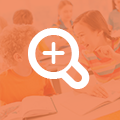Inclusive & Empowered: The Future of Education

Inclusive education isn’t just a buzzword. It’s an educational revolution!
Imagine a classroom. It’s buzzing with diverse voices and perspectives. Students with different racial and socio-economic backgrounds, learning styles, and abilities collaborate as they create a vibrant tapestry of knowledge. This isn’t a utopian vision of the future. It’s the very heart and soul of inclusive education.
![]()
Inclusive education goes beyond ‘access to education for all’. It’s about kicking down barriers that have – traditionally – excluded marginalized groups such as students with disabilities (physical or intellectual) and those from minority backgrounds. It’s about creating differentiated learning spaces that celebrate diversity, value each student’s unique strengths, and provide the support they need to flourish. This blog takes a dive, deep into the transformative power of inclusive education, exploring its role and impact on Sustainable Development Goals (SDGs), the roadblocks to implementation, and why it’s the cornerstone of education’s future.
![]()
The Ripple Effect of Inclusive Education
The benefits of inclusive education extend far beyond individual students. It creates a domino effect, impacting everyone involved positively.
![]()
Enhanced Learning Outcomes: Students (with and without disabilities) in inclusive classrooms have improved academic performance. The diverse learning styles and perspectives create a richer learning environment that fosters deeper understanding and critical thinking skills.
Empowering All Learners: Inclusive education fosters a sense of belonging and self-worth for all students. When students feel their contributions are valued, they’re more likely to become engaged learners and confident individuals. Moreover, when curriculum is designed to meet the unique needs of students, it empowers them further to take control of their learning.
Fostering Empathy: By interacting with peers from diverse backgrounds, students develop empathy and respect for differences. It creates the path for a more inclusive and just society in the future where collaboration and understanding are the cornerstone.
Building Bridges to Lasting Peace and Tolerance: There is plenty of debate about building lasting peace and tolerance in the world. When children are exposed to an inclusive environment from an early age, they will inculcate and adopt the concept of empathy and tolerance later in their lives. This contributes to peace and tolerance.
Unlocking the SDGs Through Inclusion
The United Nations member states met in 2015 to adopt the visionary 2030 Agenda for Sustainable Development. The agenda serves as a global compass, guiding us towards a future with peace, prosperity, and a healthy planet for generations to come. Sustainable Development Goals lie at the core of this vision. In total there are 17 goals, with education playing a central role in achieving goals like quality education (SDG 4) and reduced inequalities (SDG 10). Inclusive education directly addresses these goals by:
![]()
Ensuring Access
SDG 4 – Ensure inclusive and equitable quality education and promote lifelong learning opportunities for all. The goal is directly addressed by inclusion as it guarantees all children access and participation in education.
Empowering All Learners
Inclusive education fosters an environment where diverse learning styles and needs are catered to, maximizing the potential of every student. This also ties in with SDG 4.
Promoting Equality
SDG 10 – Reduce inequality within and among countries. Inclusion and inclusive education helps break down barriers. As it nurtures the values of peace and tolerance and a culture of acceptance, it promotes a more equitable society where inequalities and discrimination can be addressed.
Power of Collaboration:
Creating inclusive education systems requires collaboration between governments, educators, families, and communities – a key principle for achieving all SDGs (SDG 17).
Countries Leading the Charge
The Developed World
While the journey is ongoing, several countries are actively implementing inclusive education systems. Several Scandinavian countries are leading from the front. Iceland is celebrated for its progressive approach. Iceland adopted the inclusive model in 2008. Today, the country boasts a high rate of integration of students with disabilities into mainstream schools. Since 2016, less than 1% Icelandic students attend special schools. A quarter of all students receive special support in the classrooms.
![]()
Renowned for its high-quality education, another Scandinavian country, Finland prioritizes early intervention and customized support for all students. The country presents a very interesting and unique case. Finland’s education system has a long-standing commitment to ensuring ALL children participate in education. However, the concept of inclusive education, despite being the guiding principle in practice, is undefined in the education legislation. The country has gained significant attention internationally since the early 2000s for their approach. It gained worldwide popularity when Michael Moore’s documentary “Where to Invade Next” was released in 2015. The strength of the Finnish system are stated below:
- Individual planning
- Education model includes care
- Qualified staff
- Support does not determine placement
- Playing as a vital pillar of learning
In North America, Canada is a global leader in advocacy for inclusive education. Their strength lies in legislative framework and large investments in this field. Inclusive education in Canada emphasizes creating a learning environment where all students feel empowered to reach their full potential. The country prioritizes placing students with special needs in regular classrooms with additional supports, thereby ensuring inclusion to the greatest extent possible.
Developing Countries
In the developing world, India has emerged as a contender. The country has made significant strides towards inclusive education in recent years. The Right to Education Act (2009) is a landmark legislation. The Act recognizes the right of all children – regardless of religion, caste and any unique needs – to free and compulsory education alongside their peers. Additionally, their education policy (2020) also highlights the importance of inclusion and creates provisions for students with special needs. As a result, enrollment of all students has increased. Their efforts to develop sensitization programmes for educators, parents and communities is laudable. Yet another result is the emergence of early identification and interventions for students.
Barriers to Inclusion
While the potential of inclusive education is undeniable, there are significant barriers hindering its full implementation across the globe. These barriers can be broadly categorized into three main areas:
![]()
1. Societal and Cultural Barriers:
- Societal attitudes towards individuals with special needs or learning disorders
- Perceptions of stigma
- Cultural beliefs
- Lack of public awareness
2. Developmental Barriers:
- Economic challenges (particularly for developing countries)
- Insufficient infrastructure (learning materials, technology and buildings)
- Limited resources (scarcity of qualified professionals, insufficient teacher training)
3. Governmental Barriers:
- Poor legislation and policies
- Ineffective implementation
- Insufficient allocation of budget
- Limited data or absence of data
Inclusion is the Future of Education
Inclusive education isn’t just about ticking a social justice box. It’s not just fluff to make everything appear beautiful. Inclusion is about unlocking each student’s full potential. In an increasingly interconnected world, fostering empathy, understanding and respect for diversity is crucial. Here’s why inclusive education is the future of education:
![]()
Preparing Students for a Diverse World: By learning alongside and collaborating with diverse peers, students develop the critical skills needed to thrive in a globalized world.
Igniting Innovation: Inclusive classrooms are hotbeds for innovation. Diverse perspectives, collaboration between students and unique learning styles lead to a richer learning experience. Consequently, this fosters creativity and problem-solving skills.
Building a Just Society: Inclusive education promotes social inclusion and equality of opportunity for all. This is the cornerstone for a more equitable and just world where everyone has the chance to contribute and succeed.
The Takeaway
Inclusive education isn’t just a futuristic fantasy. It’s necessary to create and mold a more equitable and prosperous society in the future. By investing in teacher training, infrastructure, and fostering a culture of acceptance and tolerance at the grassroots level, we can unlock the immense potential that lies within every child. Let’s build bridges of inclusion, and pave the way for a brighter future, together.




Leave a Reply